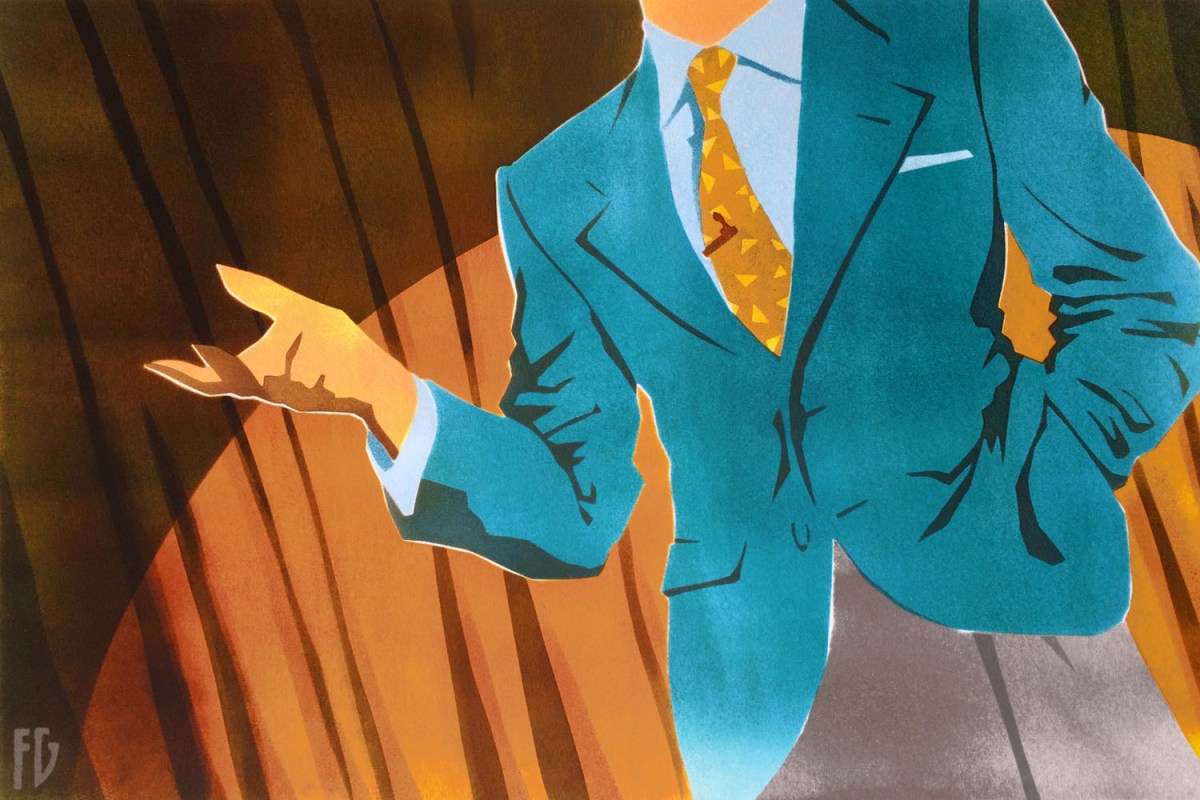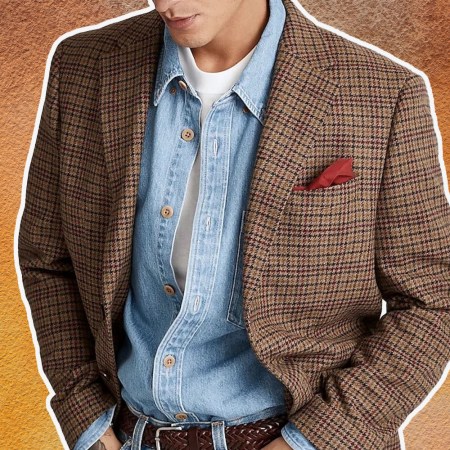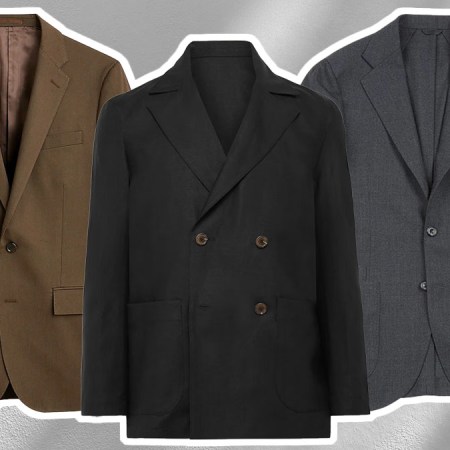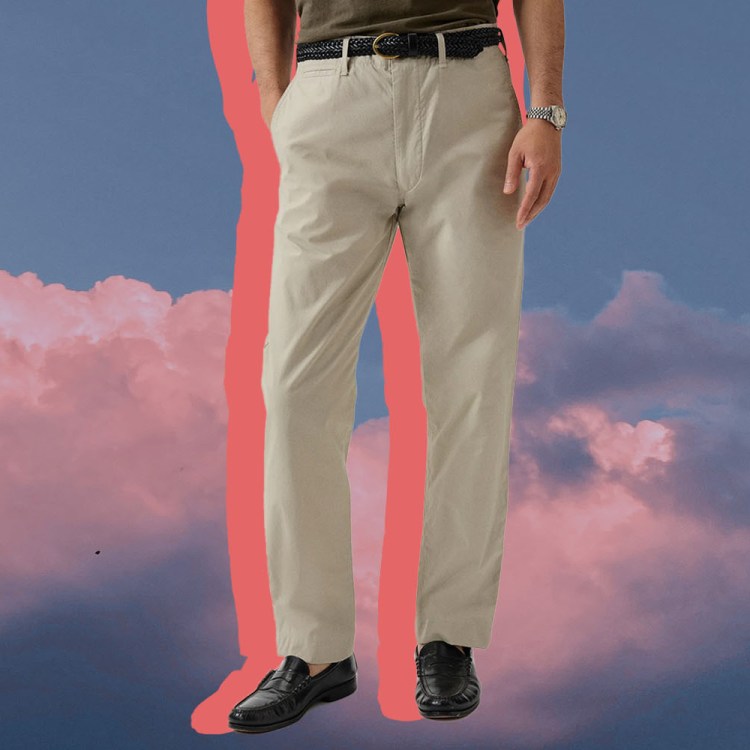Every night I sit down to watch The Late Show with Stephen Colbert, and every night I become immediately annoyed by how his suit fits. His trousers sit too low — you can see the bottom of his shirt and tie below his top button. His jacket is usually too small and too short, and the lapel is too narrow; both are unflattering. (He also keeps his jacket buttoned when he sits down, which is an entirely separate but still glaring issue.)
But it’s about more than the way his suit fits. It’s the way his suit is styled. It’s too slim — it looks trendy, almost dated. And it doesn’t work for a man of his age, stature or character.
Colbert isn’t alone. These days too many men are leaning hard into the slim suit trend. And I get it, it’s tempting: they’re hip, they’re in style right now, and they’re often what’s featured in stores and on hand off the rack. But let me say this loud and clear — to you, Mr. Colbert, but also to any man whose vent flares out because it’s pulling around his waist, or whose trousers pucker along the seams — your suit is too tight, and it is not the right cut for you.
Before we get too into the weeds about the particulars of why a slim suit is not the wardrobe staple you think it is, it’s important to establish that this is not a universal truth. There are plenty men who adeptly pull off the look. John Oliver, e.g., is someone who regularly opts for skinny ties and skinny lapels and skinny trousers and keeps it looking refined and chic. Rami Malek often opts for slimmer silhouettes, and he, too, pulls them off with aplomb.
Veering too far in the opposite direction isn’t the answer either. When I sold suits in college, older men would stop by in their billowing, old-school Brooks Brothers suits. They were almost always a full size too large, they all had a single vent, and they all looked dated. A full break or a pant that fits too loose can look slovenly, and a jacket that fits too loosely looks cheap. All of the above suggest a man who doesn’t truly don’t care about his appearance.
To the benefit of everyone, New York Fashion Week this year boasted an enviable collection of classic-cut kits that shirked the skinny ties and slim trousers. Men everywhere would be wise to fall in line.
Classic-fit suits come with a slew of benefits. They’re true to their name, for starters: classic connotes something that won’t go out of style, which also means you get more bang for your buck. And that’s important, because a suit — or at least a good suit — should be an investment.
“It’s leaning towards more classic,” Kamau Kamsten, founder of NYC-based custom clothier Kamsten, tells us. “Because when you’re investing in something, you want something that’s going to last a little bit longer.”
But why now? The slim suit has been the de facto look for more than a decade, so what changed?
“I think what happened was that there were a lot more people that were trying to fit into a trend that didn’t flatter them as well as it could have,” he says. “I definitely try to lean people towards lapels and trouser width that, like I said, have a bit more longevity and kind of a timeless appeal about it. And also, they’re more comfortable. It’s a lot to peel off some skinny trousers at the end of the night,” he jokes.
“I think guys are inspired by something different and by newness, but you just have to remember your daily life, what you’re doing day to day. Especially when you’re spending an enormous amount of money on something.”
He’s right: it doesn’t make financial or sartorial sense to invest more than a thousand bucks in something that isn’t going to last you a few seasons. And the bracket of men who can pull off the slim suit all the time is narrow. It’s not a look that is going to flatter everyone’s physique or make sense with everyone’s aesthetic or vibe. A well-styled classic suit, on the other hand, can be worn during work or play. It will enhance your look instead of stepping out in front of it to proclaim that you are on trend. It exudes a confidence that a trendy suit often does not. It says I know what looks good on me and I have enough style to stay true to that.
What, then, are the elements of a perfect classic-fitted suit?
“When you do really classic silhouettes and classic tailoring, you have something that really kind of stands the test of time,” says Jake Mueser, a New York tailor and founder of J. Mueser Bespoke who suggests opting for moderate to full lapels to get the classic look. “I use word balance a lot — portions that make sense.”
He also suggests opting for a longer jacket, and a higher-rise trouser. “A trouser can be very trim, but it shouldn’t conform to the back of your knee. It can be very tailored to the waist and the seat, and give a little bit of room through the thigh for movement. And through the knee and calf, it should be trim, but it also needs to be able to move. I also think just bring the rise a little higher. A suit shouldn’t look like a skinny pant — it’s a different animal.”

Finding that perfect balance means getting both the proportions and the overall look right. You want to make sure the cut of your jacket makes sense with the cut of your trouser, and your lapel makes sense with your shirt collar. “The whole thing has to follow that (meaning the lapels). The collar of the shirt, things all have to be kind of in harmony for it to make sense,” says Mueser.
You also want to make sure the suit makes sense on you. Consider not only your frame, but what you do for work, your age, your personality.
“Tailoring is really very individualized,” he says. “Be aware of your age. You don’t want to look like an old man, but you don’t necessarily want to wear the same suit that would make sense on a 25-year-old when you’re [not that age]. Dress in a way that makes sense.”
And just because you’re opting for a classic suit doesn’t mean you have to dress like a square. Kamsten says he suggests adding flair with touches like a peak lapel if your professional environment allows it. “If you want to be different, wear a pin color, wear a cocktail cuff. Make those touches,” he says.
He also suggests not feeling beholden to the idea that a suit is simply for dressing up as a way to both look stylish more often in your life, and to get more comfortable in your suit.
“[I tell] my clients, ‘Just wear it.’ You’re going out to dinner, just wear it. You’re going out for a night out, just put it on. Add a pair of loafers, a less formal element, and you’ll feel more comfortable and less self-conscious if you’re not accustomed to doing it. You just have to put it on and get ready for the compliments.”
This article was featured in the InsideHook newsletter. Sign up now.























